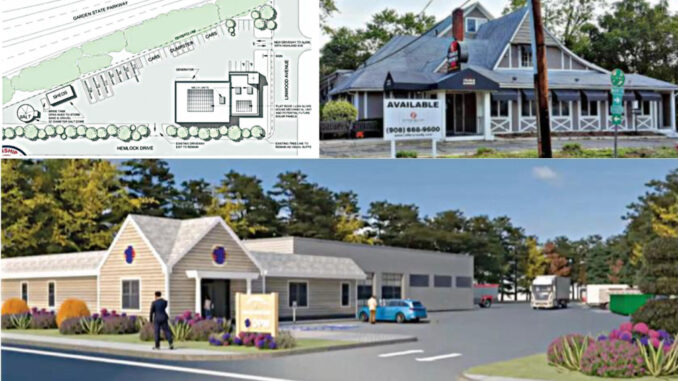
TOWNSHIP OF WASHINGTON–An investigation using ground-penetrating radar to locate suspected underground storage tanks used for fuel oil at 95 Linwood Ave. focused on the parking lot area of the 1.5-acre property and found no signs of underground tanks or related metal piping.
That’s according to a Phase II, or second environmental assessment, of the 95 Linwood property that followed a Phase I report that found a “recognized environmental condition” or “REC” at the site due to “historical fuel oil storage.”
Neither of the two reports made by Lisko were disclosed or revealed to the public despite multiple Open Public Records Act (OPRA) requests from Pascack Press and residents.
The Phase II environmental site assessment at 95 Linwood took place in mid-May — unbeknownst to the public — despite Open Public Records Act requests to view the Phase I and a suspected Phase II environmental investigation reports.
Township Attorney Kenneth Poller received the Phase II investigation summary report from Lisko Environmental on May 18, approximately two weeks ago, and both Phase I and Phase II were publicly released on June 1.
Moreover, Poller received the site’s 513-page Lisko Phase I environmental site assessment report on May 6, 2022, and did not publicly release it until June 1.
Both reports were emailed to Pascack Press in late afternoon on June 1, one day before the Township Council’s scheduled June 2 special meeting to discuss whether to put the police department or public works facility at 95 Linwood Ave. (formerly Charlie Brown’s), or possibly even nix the purchase altogether. That special meeting was cancelled on the morning of June 2, according to the town clerk, because of an issue to do with advertising the meeting. She said the subject would join the June 8 regular council agenda.
“The scope of LISKO’s Phase II ESA activities consisted of conducting a ground penetrating radar
(GPR) scan of the subject property to search for evidence of past or present (underground storage tanks) UST(s) and/or (above-ground storage tanks) ASTs, piping associated with the potential historical fuel oil storage and usage,” states the Phase II Lisko report.
“On May 16, 2022, Ground Penetrating Radar Systems, LLC (GPRS), with oversight of LISKO,
conducted a Ground Penetrating Radar (GPR) survey to search for evidence of historical fuel
storage on the subject property. The GPR survey was completed using a GSSI® SIR-4000 radar
control unit equipped with a 400-megahertz (MHz) antenna,” continues the report.
“The survey was completed utilizing 2-dimensional scanning methods in a six-foot surface grid pattern (i.e., in north-south and east-west directions) on the subject property to a maximum depth of 3 feet below grade surface. No anomalies consistent with a tank or piping were identified during this investigation phase,” said the Lisko Phase II report summary.
“Based on a review of the results of this investigation, LISKO recommends no further investigation or action is warranted for the subject property,” concluded the Phase II investigation summary.
However, it was unclear why Lisko Environmental directed its consultant, Ground Penetrating Radar Systems, a national subsurface investigation contractor, to use its radar to scan the parking lot, which turned up no signs of buried storage tanks.
Prior archival photos shown by Hemlock Drive resident Bill McAuliffe appeared to show at least three gas pumps at a prior business there and also appeared to be more near the roadway than in the rear of the property, a resident told Pascack Press.
Rose Candeletti, a Hemlock Drive resident who also requested the environmental reports on 95 Linwood Ave., and received them on June 1, texted a reporter that the Phase II report “shows that they scanned a limited area and it was the parking lot and behind the building, not in the front where the original pumps were!”
